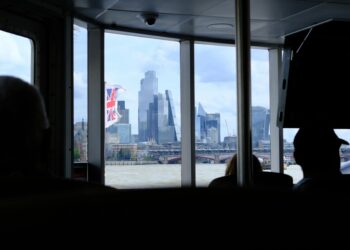The UK Conservatives` no confidence vote is triggered when a threshold of the MPs vote in support of having such a vote against a UK sitting Prime Minister is reached.
The rule requires a threshold of 15 per cent of Conservative MPs, which is 54 to trigger the no confidence vote in their leader.
The process was invoked on Monday night as the climax of the intrigues following Boris Johnson`s conflict with his conservative peers over his breach of the Covid-19 guidelines.
He survived the no confidence vote, but remains greatly weakened in office as Prime Minister and head of the Tory party.
The Prime Minister has been in troubled waters resulting from the revelations that, while the rest of the UK stayed indoors on orders of the Boris led Tory government, because of the COVID-19 pandemic, the Prime Minister had partied in the downing street government quarters.
What does the no confidence vote entail?
The no confidence vote is a secret balloting system, which allows all members of parliament (MPs) to cast their votes either in support or against the Prime Minister, who is also the head of the Conservatives.
For the voting, a ballot box is expected to be placed in a meeting room on the first floor of the Palace of Westminster. Tory MPs will be forbidden from taking any pictures inside the room.
This is intended to discourage party whips from demanding photographic evidence that an MP has voted in support of the Prime Minister.
Votes are also allowed to be cast through proxy for MPs who are unavoidably absent at the day of the voting.
The proxy vote can only be made by another member of parliament on behalf of a colleague who is absent.
Those submitting a proxy vote must also send an email to the 1922 Committee outlining their voting intention. This is usually done some ours before the actual voting commences.
According to Wikipedia, the 1922 Committee, formally known as the Conservative Private Members’ Committee, is the parliamentary group of the Conservative Party in the House of Commons of the United Kingdom.
The committee, consisting of all Conservative backbench members of Parliament, meets weekly while Parliament is in session and provides a way for backbenchers to co-ordinate and discuss their views independently of frontbenchers.
The votes are counted immediately afterwards, and the result announced. This is usually done in front of all MPs and journalists in the same meeting room.
Following the result, the presiding officer of the 1922 Committee will then declare that the Conservative Party either does or does not have confidence in the Prime Minister, and reveal the number of votes cast in both directions.
What does a Prime Minister need to survive?
The Prime Minister needs to win the support of more than 50 per cent of all Tory MPs to remain leader of his party, and therefore Prime Minister.
To survive the vote, the Prime Minister would need to secure a simple majority – the backing of 180 Tories, or half of his MPs, plus one.
If he does secure that number, the Prime Minister will in theory be safe from a further challenge for the next 12 months.
The 1922 Committee does not allow more than one vote of no confidence in a leader within a single year, thought his can be amended by the 1922 Committee to reduce the timeline to about 6 months.
On the contrary, if the Prime Minister loses, there will be a leadership contest and he will be barred from standing.
The winner would become the next Prime Minister, but until then the Prime Minister who lost the no confidence vote will still remain in office temporarily until a successor is chosen.
However, he cannot be forced to remain in office, even though temporarily. So, if he decides he wanted to leave immediately, an interim PM would be needed.












